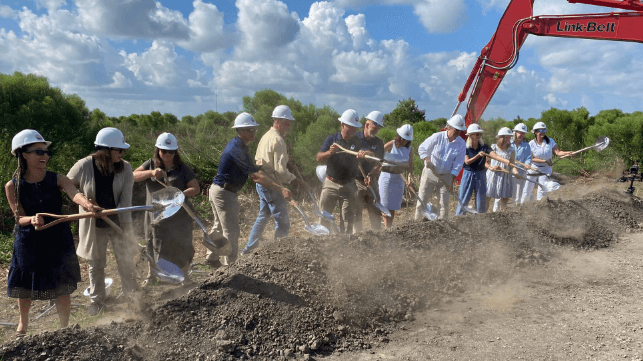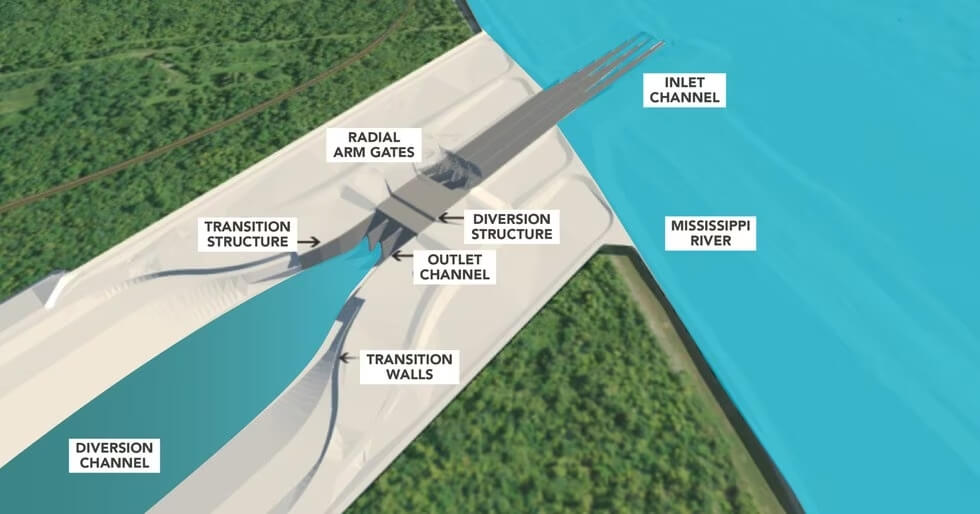BP's Deepwater Horizon Payout Funds $3B Coastal Restoration Project

The State of Louisiana has broken ground on what officials say is the largest ecosystem restoration project in American history, the Mid-Barataria Sediment Diverszion.
Louisiana has been losing saltwater marsh acreage to the ocean for a long time. The reasons are numerous and there is no one single cause, according to researchers. Land subsidence, hurricanes, sea level rise, droughts, canal dredging, oil pollution and levee construction along the banks of the Mississippi have all played a role.
The levees, however, are a leading cause. Until the construction of levees in the early 20th century, the river's annual floods used to wash sediment down to the coastal plain, building up marshland with new soil. The levees protect riverside communities, but also prevent river sediment distribution to the coastline.
To reverse the trend, the State of Louisiana will simulate a levee-free river by building sediment diversions. These large-scale projects will send a portion of the river's water back to the coastal plain, where it used to belong. The two-mile-long Mid-Barataria Sediment Diversion is the largest part of this network of projects. Its sponsors say that it will restore as much as 27 square miles of wetland in the Barataria Basin by 2070, and it will complement adjacent sediment diversion projects.

Courtesy CPRA
 Courtesy CPRA
Courtesy CPRA
“The monumental Mid-Barataria Sediment Diversion is the most important project to restore and expand wetlands in the history of the United States, a remarkable achievement that can help begin to turn the tide on Louisiana’s land loss crisis,” said Collin O’Mara, president and CEO of the National Wildlife Federation.
O'Mara noted that the coastal wetlands also provide protection for Louisiana's communities against the risk of storm surge, which is often the most dangerous impact of a hurricane.
The earthworks for the project will be substantial. The contractors will dig a channel through the Mississippi levee at Plaquemines Parish. A new bridge will have to be built over it to carry a state highway, and at one end of the spillway a gate structure will be constructed to hold back the Mississippi's water when the channel is not in operation. During periods of high water, sediment-bearing riverwater will wash down the channel at up to 75,000 cubic feet per second, carrying sediment and building up marshland.
The project will cost nearly $3 billion, which will be largely paid for by restoration settlement funds from the Deepwater Horizon oil spill.
“The Mid-Barataria Sediment Diversion has the potential to build and maintain more land than any other project in Louisiana’s Coastal Master Plan. These wetlands are critical to the protection of the communities, fisheries, and economies in Louisiana—and all that our coast supports across the country,” said Chip Kline, Chairman of the Louisiana Coastal Protection and Restoration Authority Board.

that matters most
Get the latest maritime news delivered to your inbox daily.
The downside of the project is its expected impact on saltwater species, including dolphins, fish, shrimp and shellfish. The Army Corps of Engineers expects "major, permanent, adverse impacts on brown shrimp abundance" as a result of flooding the basin with freshwater, which could "exacerbate trends in the aging workforce to leave the [shrimping] industry."The area's eastern oyster aquaculture industry is also expected to suffer "major, permanent, adverse impacts."
Oyster growers and fishermen objected strenuously to the plan for years, but were not able to block it. The governing councils in the counties where the project is located, St. Bernard Parish and Plaquemines Parish, both voted against it in 2021.
